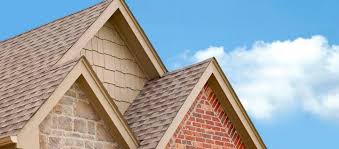Glass Reinforced Plastic (GRP) fencing is becoming increasingly popular across various sectors due to its numerous benefits, particularly its cost-effectiveness over the long term. This article explores the financial advantages of GRP fencing compared to traditional materials, using real-world examples to illustrate how GRP fencing can lead to significant savings.
Durability and Longevity
One of the primary reasons GRP fencing is cost-effective is its exceptional durability. Unlike traditional materials such as wood and metal, GRP does not rot, rust, or corrode. This makes it an ideal choice for environments exposed to harsh weather conditions. For example, the coastal town of Whitby installed GRP fencing to withstand the salty sea air that would quickly degrade wooden or metal fences. The longevity of GRP means fewer replacements and repairs, leading to long-term savings.
Low Maintenance Costs
GRP fencing requires minimal maintenance compared to its traditional counterparts. Wood fences need regular treatments to prevent rot and insect damage, while metal fences require periodic painting and anti-rust treatments. In contrast, GRP fencing maintains its structural integrity and appearance with little to no maintenance. The Port of Felixstowe, the largest container port in the UK, replaced its metal fencing with GRP to reduce maintenance costs and minimise disruption. The reduced need for upkeep translates into significant cost savings over the fence’s lifespan.
Lightweight and Easy Installation
The lightweight nature of GRP fencing makes it easier and cheaper to transport and install. This was evident in the redevelopment of the Olympic Park in London, where GRP fencing was chosen for its ease of installation. The project managers reported substantial savings in both time and labour costs compared to installing heavier metal fencing. The quick installation process also means less disruption and lower associated costs for businesses and public spaces.
Safety and Non-Conductivity
GRP fencing is non-conductive, making it a safer option for areas near electrical installations. Traditional metal fences can pose serious safety risks and require additional grounding and safety measures. National Grid, responsible for electricity transmission in the UK, has incorporated GRP fencing around its substations to eliminate the risk of electrical hazards. This safety feature not only protects workers and the public but also reduces the costs associated with implementing additional safety measures.
Aesthetic and Customisation Benefits
The aesthetic versatility of GRP fencing allows it to blend seamlessly with various environments without the need for regular painting or staining. For instance, the Royal Botanic Gardens in Kew opted for GRP fencing to match their specific design requirements while benefiting from the material’s longevity and low maintenance. Customisable colours and finishes reduce the need for frequent updates and maintenance, resulting in further cost savings.
Environmental Impact
Sustainability is an important consideration in modern construction and infrastructure projects. GRP fencing is environmentally friendly, often made from recycled materials, and can be recycled at the end of its life. The Eden Project in Cornwall, known for its commitment to sustainability, chose GRP fencing to align with its environmental goals. Using eco-friendly materials not only helps protect the environment but can also attract environmentally conscious customers and stakeholders, enhancing the long-term value of the investment.
Real-World Savings
Several real-world examples highlight the cost-effectiveness of GRP fencing. Network Rail, managing the UK’s railway infrastructure, reported substantial long-term savings after replacing traditional metal fencing with GRP. The reduced maintenance, ease of installation, and longevity of GRP fencing contributed to lower overall costs, proving it to be a wise investment.
Similarly, the University of Oxford installed GRP fencing around its science parks to protect sensitive equipment without incurring high maintenance costs. The fencing’s durability and non-conductive properties provided a safe and cost-effective solution.
Conclusion
In conclusion, GRP fencing offers numerous financial advantages over traditional materials, making it a cost-effective choice for a wide range of applications. Its durability, low maintenance requirements, ease of installation, safety features, aesthetic versatility, and environmental benefits contribute to significant long-term savings. Real-world examples from Whitby, the Port of Felixstowe, the Olympic Park, National Grid, the Royal Botanic Gardens, the Eden Project, Network Rail, and the University of Oxford demonstrate the practical and financial benefits of investing in GRP fencing. As industries and organisations continue to seek cost-effective and sustainable solutions, GRP fencing is poised to play an increasingly important role in securing and enhancing various environments. Engineered Composites is the UK’s leading independent GRP supplier of high-quality sustainable GRP products, providing an excellent source for those looking to invest in this cost-effective fencing solution.








